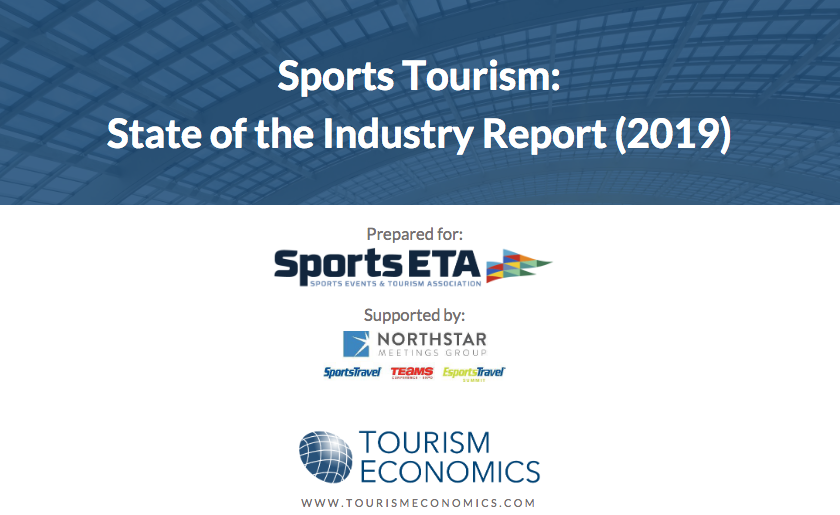Landmark Study by Sports ETA on U.S. Sports-Related Travel Shows $45.1 Billion Impact, Provides Benchmark for Post-COVID 19 Impact Measurement
U.S. sports travelers, event organizers and venues spent a total of $45.1 billion in 2019, an increase of over 5 percent from the previous year, generating $103.3 billion in direct, indirect and induced business sales, according to the 2019 State of the Sports Tourism Industry Report in America presented by the Sports Events and Tourism Association (Sports ETA) in partnership with the Northstar Meetings Group.
The landmark study, released September 1, 2020, presents the most comprehensive and representative data quantifying the value of sports-related travel in the United States. Conducted by Tourism Economics, an Oxford Economics company, the report incorporates original data from Sports ETA with Longwoods International Travel Survey Data, Bureau of Economic Analysis and Labor Statistics data, U.S. Travel Association data together with NCAA and annual sports attendance figures.
“This industry study will set a benchmark for the sports-related travel industry to use as we plan for a post COVID-19 environment and sports-related travel returns,” said Al Kidd, President & CEO of Sports ETA. “While 2020’s numbers will be severely affected by the pandemic, we expect the industry to bounce back once sports are able to resume.”
The survey found that in 2019, nearly 180 million people traveled to a U.S. sporting event, either as a spectator or a participant. The sports tourism industry generated nearly 740,000 jobs over the year, including 410,000 direct and 328,000 indirect jobs.
Additional major findings in the State of the Industry Report include:
- Sports tourism generated $14.6 billion in tax revenues in 2019, with $6.8 billion of that going to state and local governments.
- The number of sports travelers grew 2 percent from the year prior, and the number of people traveling to attend sports events in the United States has increased by more than 10 million since 2015.
- Sports travelers, event organizers and venues spent $12.5 billion on transportation, $9.2 billion on lodging and $8.6 billion on food and beverages in the last year.
- Overnight sports travelers grew to 96.4 million in 2019, an increase of 1.4 million from the previous year. An estimated 54 percent of all sports travelers spent the night in the event destination. Overnight sports travelers spent $359 per person trip, an increase of $12 year-over-year, while day-trippers spent $79 per person trip in 2019.
“Sports generate substantial economic impacts to destinations across the United States,” said Adam Sacks, President of Tourism Economics, an Oxford Economics Company. “As a result, the recovery of sports-related travel will be an important driver of the economic recovery in the coming year.”
The report also analyzes the early impact of the COVID-19 shutdown on sports-related travel, noting that in March 2020 nearly 10 million fewer people traveled to participate in or watch a sporting event compared to the previous year, resulting in a loss of $2.5 billion in direct spending.
The report estimates that from March to December 2020, 75 million fewer people are expected to travel to sporting events compared to 2019, resulting in a loss of $20 billion in direct spending in 2020.


